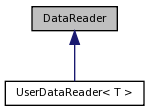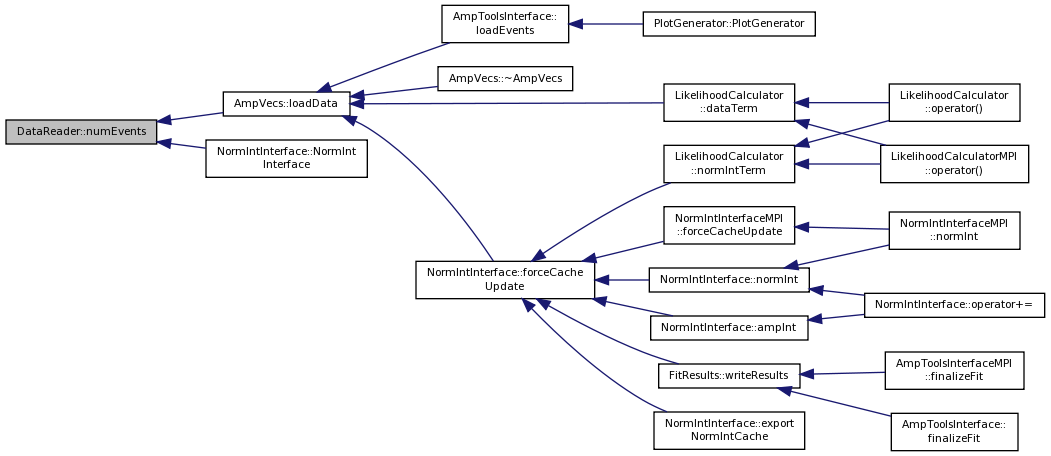 |
AmpTools
|
 |
AmpTools
|
#include <DataReader.h>

Public Member Functions | |
| DataReader () | |
| DataReader (const vector< string > &args) | |
| virtual | ~DataReader () |
| virtual Kinematics * | getEvent ()=0 |
| virtual void | resetSource ()=0 |
| virtual unsigned int | numEvents () const =0 |
| virtual string | name () const =0 |
| virtual DataReader * | newDataReader (const vector< string > &args) const =0 |
| virtual DataReader * | clone () const =0 |
| virtual vector< string > | arguments () const |
| virtual bool | isDefault () const |
This base class provides an interface to data.
It is intended that the user writes a functional data reader that inherits indirectly from this class (through the UserDataReader class) and defines the necessary virtual member functions for accessing data.
Definition at line 57 of file DataReader.h.
|
inline |
This is the default constructor.
Definition at line 65 of file DataReader.h.
|
inline |
This constructor takes a list of arguments and stores them.
Definition at line 71 of file DataReader.h.
|
inlinevirtual |
This is the destructor.
Definition at line 78 of file DataReader.h.
|
inlinevirtual |
Returns the list of arguments that was passed to the constructor.
Definition at line 146 of file DataReader.h.
|
pure virtual |
This method is overridden by the UserDataReader class and does not need to be defined (or used) by the user.
Implemented in UserDataReader< T >.

|
pure virtual |
The user should override this function with one that provides a pointer to a Kinematics object. When the end of a source is reached, a null pointer should be returned.
Return of a pointer is done to save memory copy and allocation time. The class the receives the pointer is responsible for deleting memory when it is finished with it.
This method should be virtual in the user's class if the DataReaderMPI template is to be used.

|
inlinevirtual |
Returns true if this instance was created using the default constructor and returns false otherwise.
Definition at line 152 of file DataReader.h.
|
pure virtual |
The user should override this function with one that returns the class name of the derived data reader.
|
pure virtual |
This method is overridden by the UserDataReader class and does not need to be defined (or used) by the user.
Implemented in UserDataReader< T >.
|
pure virtual |
The user should override this function with one that returns the number of events in the source. This is used for allocating memory to store the data and amplitudes.
This method should be virtual in the user's class if the DataReaderMPI template is to be used.

|
pure virtual |
The user should override this function with one that resets the source so that the next call to getEvent() begins reading from the first event in the source.
This method should be virtual in the user's class if the DataReaderMPI template is to be used.
